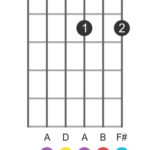Guitarists are constantly seeking instruments that offer both exceptional quality and affordability. Brands like Aria and Firefly have emerged as contenders in this space, often drawing comparisons for their impressive features at various price points. While Aria has long been recognized for high-quality craftsmanship, Firefly guitars have carved a niche by providing remarkable value, prompting guitar players to explore options like the “little sister” full hollow body FFLS guitar.
Firefly guitars have garnered attention, particularly for models like their 338 series and Thinline variations. Early generations of the Firefly 338, known for its distinctive pointy horns, and the Thinline models have been subjects of numerous online discussions and reviews. Owners often cite their affordability as a major draw, acknowledging that while not flawless, these guitars offer a compelling entry point for players seeking specific styles without breaking the bank. Some early Firefly 338 models were noted to have neck flex, a characteristic sometimes found even in certain Gibson guitars with thinner neck profiles. The Thinline, on the other hand, was remarkably lightweight, almost to the point of feeling like a toy. Later iterations of Firefly guitars have reportedly addressed some of these initial points, introducing more substantial weight and build.
Components wise, even in their more budget-friendly offerings, Firefly guitars often incorporate full-size potentiometers. However, the stock pickups are frequently mentioned as being of only mediocre quality, suggesting an area for potential upgrades for players seeking enhanced tonal characteristics.
Moving beyond the 338 and Thinline, the Firefly Cabronita Baritone Telecaster stands out as a particularly well-regarded model. Praised for its balance of weight, playability, and tone, it represents a high point in the Firefly lineup for many players. Even with its strengths, some users have noted minor cosmetic imperfections, such as needing to refine plastic parts or address small finish inconsistencies. Despite these minor issues, the overall consensus is positive, especially concerning the P-90 pickups in the baritone configuration, often considered superior to standard Telecaster pickups found in similar guitars in the same price range.
More recently, Firefly has expanded its range to include Vee and Explorer style guitars, along with updated Mickey-mouse ear 338 models. These newer guitars have been generating buzz, particularly for features like jeweled fret ends, a detail often associated with higher-end brands like Eart guitars. Online communities and forums are filled with positive feedback regarding these models, although some design choices, such as the jack location on the Vee model, have drawn criticism. Shipping costs, typically around $27 within the continental US from their California warehouse, are also a factor for buyers to consider.
In conclusion, Firefly guitars, including potential “little sister” full hollow body FFLS models (if referring to a smaller body style within their hollow body range), present an intriguing option for guitarists prioritizing value and affordability. While they may not match the premium status and flawless finish of brands like Aria, Firefly guitars offer a compelling combination of features and playability at their price point, making them worthy of consideration for players seeking budget-friendly instruments.

